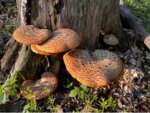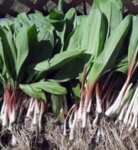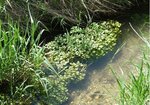I know that the calendar has flipped to June but because the musky season opener interrupted Forage Month I need to back up the truck and close out that topic. I have written about morel mushrooms, …
This item is available in full to subscribers.
To continue reading, you will need to either log in, using the login form, below, or purchase a new subscription.
If you are a current print subscriber, you can set up a free website account and connect your subscription to it by clicking here.
Otherwise, click here to view your options for subscribing.
Please log in to continue |



I know that the calendar has flipped to June but because the musky season opener interrupted Forage Month I need to back up the truck and close out that topic. I have written about morel mushrooms, asparagus and fiddleheads. These big three are the face of foraging and garner the bulk of the interest in living wild but there are more things to hunt and gather in our state. I could go on for the entire summer with a weekly forage topic but there are different fish to fry, so to speak, considering it’s now fishing season. For now I’ll finish the month with three collectables: pheasant back, ramps and watercress.
Up first, pheasant back. Our immediate area is producing a bumper crop. It seemed like I found it on every other tree while I was turkey hunting or looking for morel mushrooms. Also known as the dryad’s saddle, pheasant back can grow fast and large but bigger is not necessarily better. The smaller ones tend to be more tender. The preferred way to cook them is to sauté and season to your liking. An interesting sidenote is that the eating texture is not plant like but rather similar to that of chicken. Time is running out on the forage season because it starts in April and typically ends around late May.
Up next: ramps, another turkey hunting favorite. A good description would be wild leeks (or wild onions). To be honest, I haven’t found a lot of them but just enough to keep my eyes and nose open. If you’ve found them before, you know that smell: pungent and sweet all at the same time. Like a lot of spring forage plants they are only available for about eight weeks. I’ve eaten way more of them while out in the woods than I have ever brought home because honestly, I’m not that elaborate in the kitchen. Consider that anytime you can use an onion or some garlic, you can use wild ramps.
Last on my forage list and only because the collection season tends to last longer: watercress. The best time to harvest this water loving plant is in the Spring but it can be gathered throughout the growing season. It’s just better in the Spring. It’s been a while since I’ve collected a lot of it and the reason is because I find that trout are very distracting and the two tend to live in the same space: a stream. In any way that you would use lettuce in the kitchen or on the table, those are the same applications for watercress.
Although this concludes OTT Forage Month, I’ve really only scratched the surface when it comes to the sport. Someday I’ll cast a bigger net and include more wild things like apples, plums, pears, blueberries, raspberries, blackberries, juneberries and strawberries, walnuts, hickory nuts, acorns, wild mushrooms including morel, oyster, lobster, chanterelle, giant puffball and hen of the woods.
Is anyone else hungry?
Didn’t get enough Dave this week? Visit “Outdoor Trails and Tales with Dave Beck” on Facebook for photos and video of Dave’s adventures. You can share your own photos and video with him there as well, or by emailing him at dave@piercecountyjournal.news Also, check out OTT content on Instagram @thepiercecountyjournal